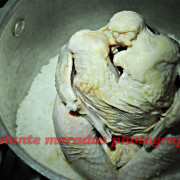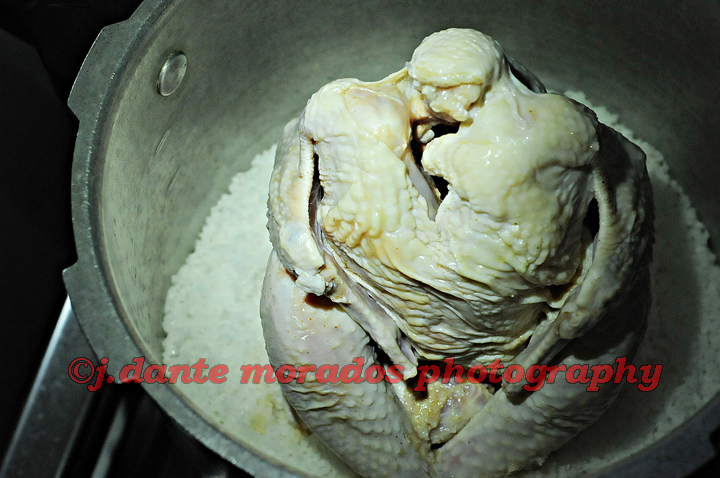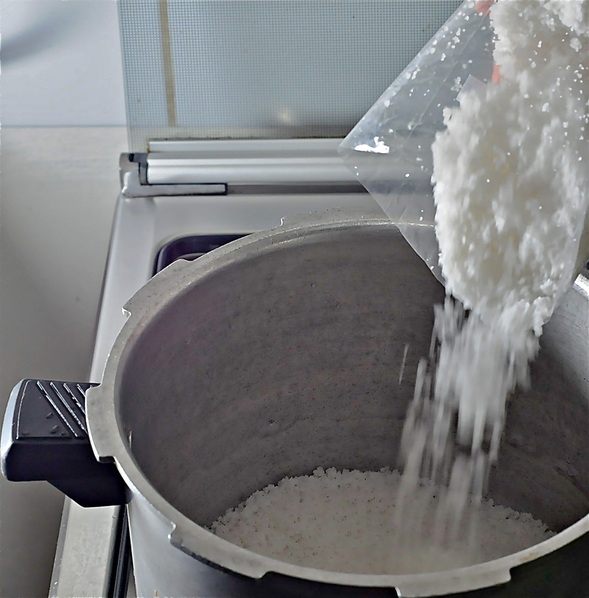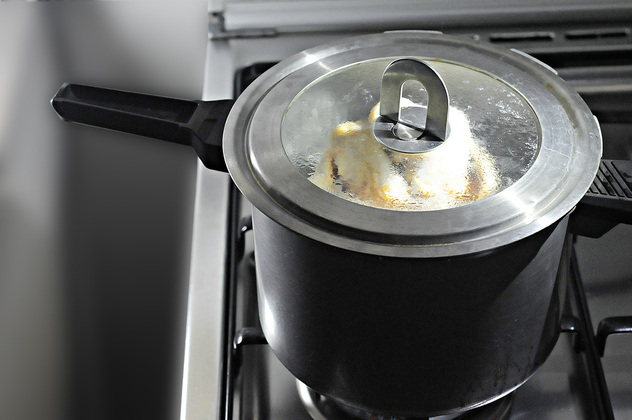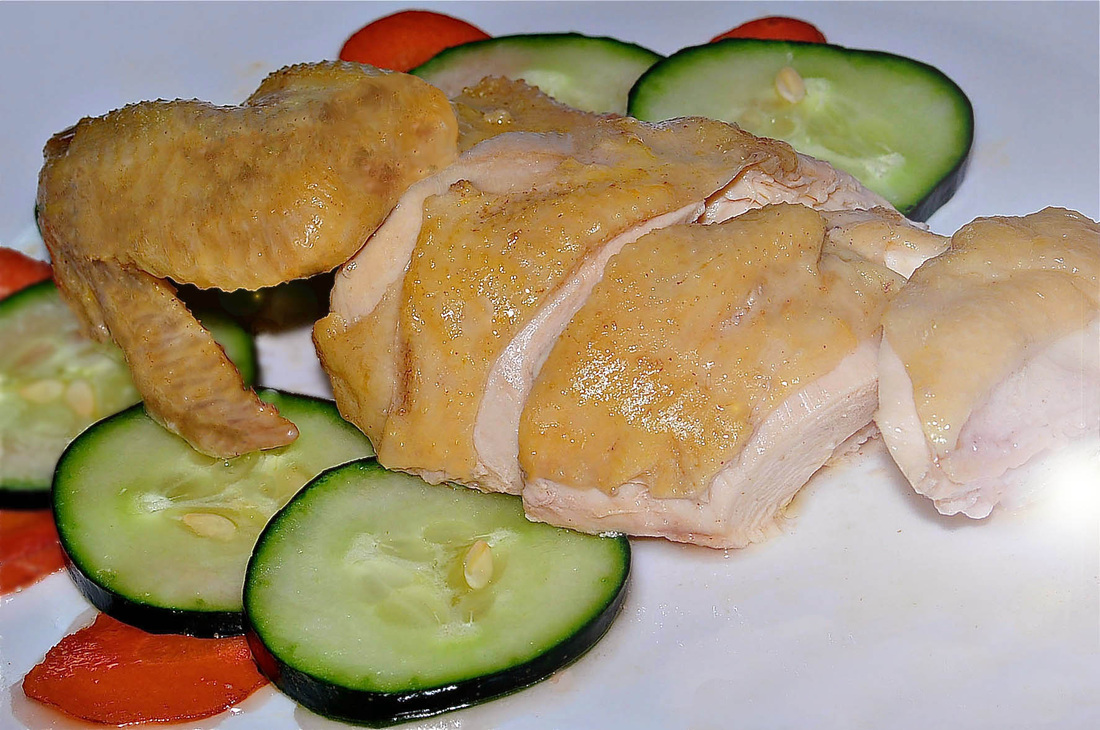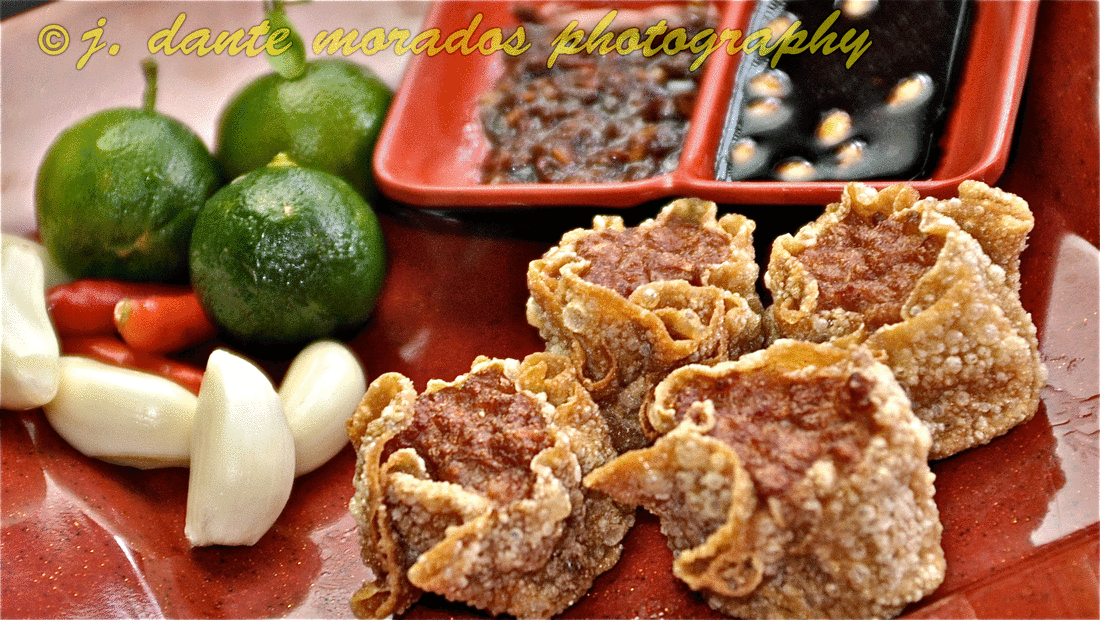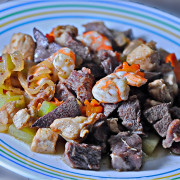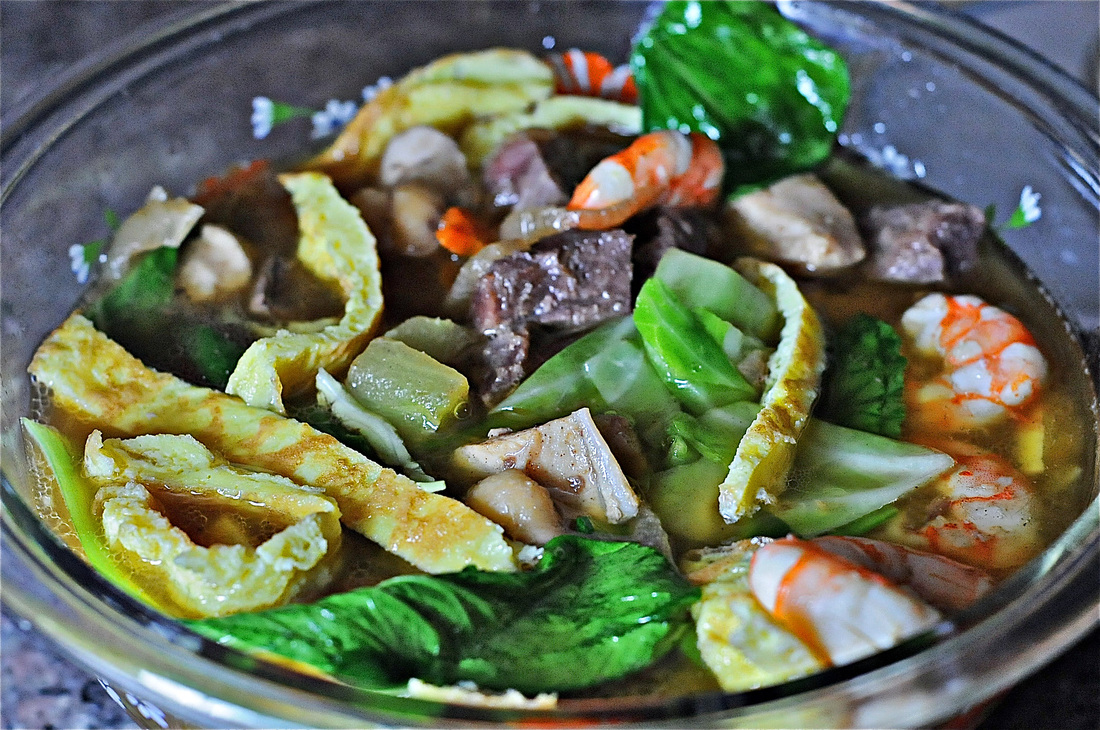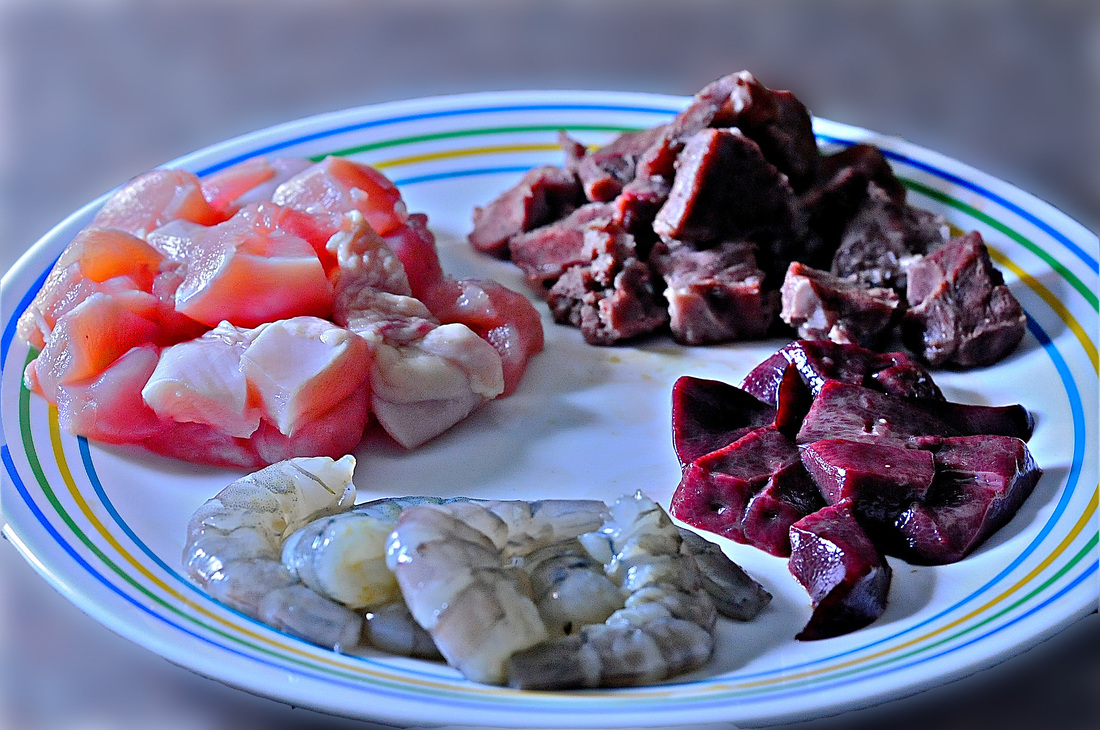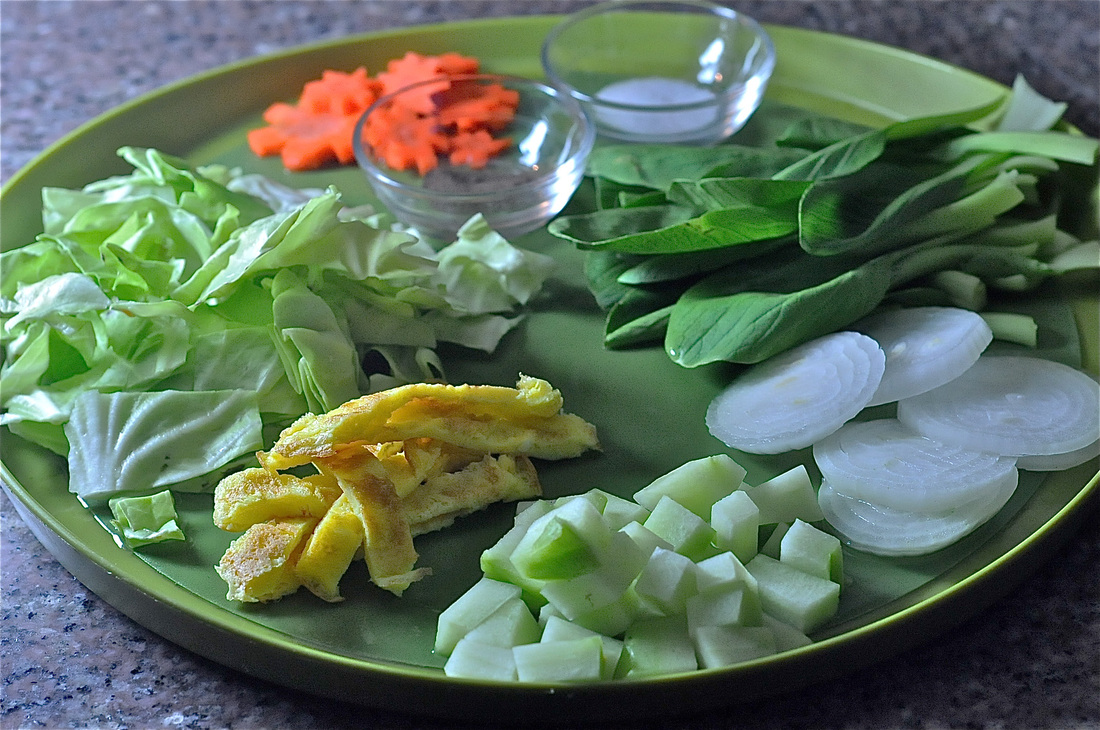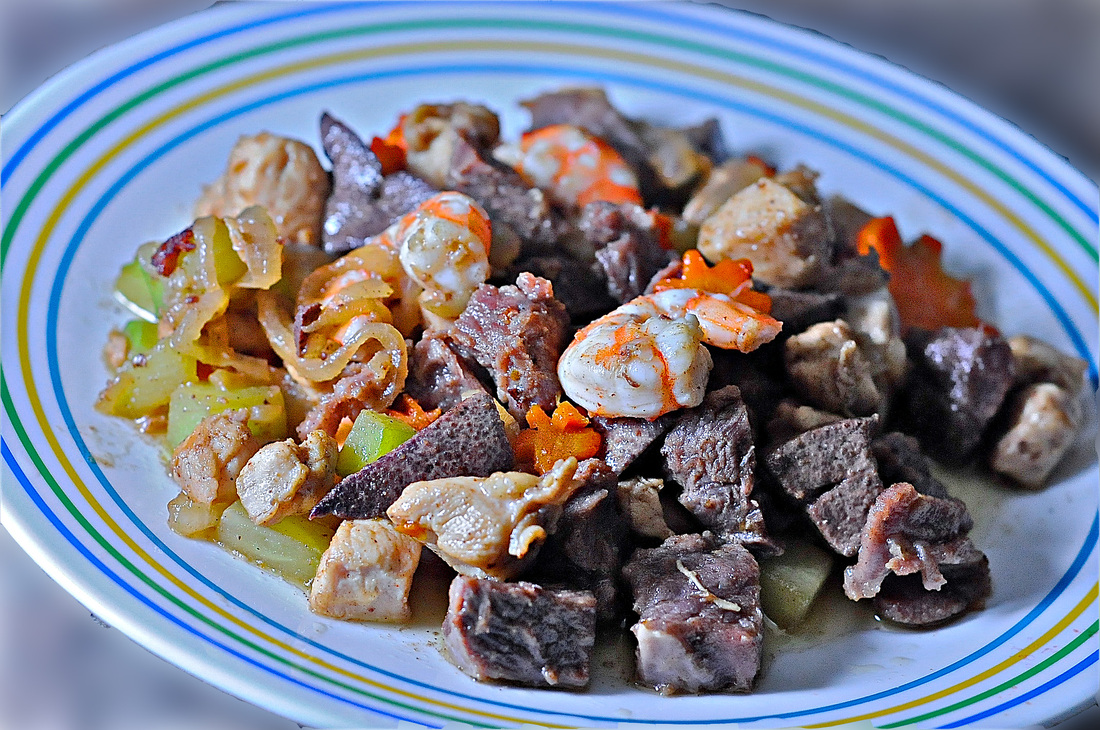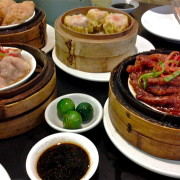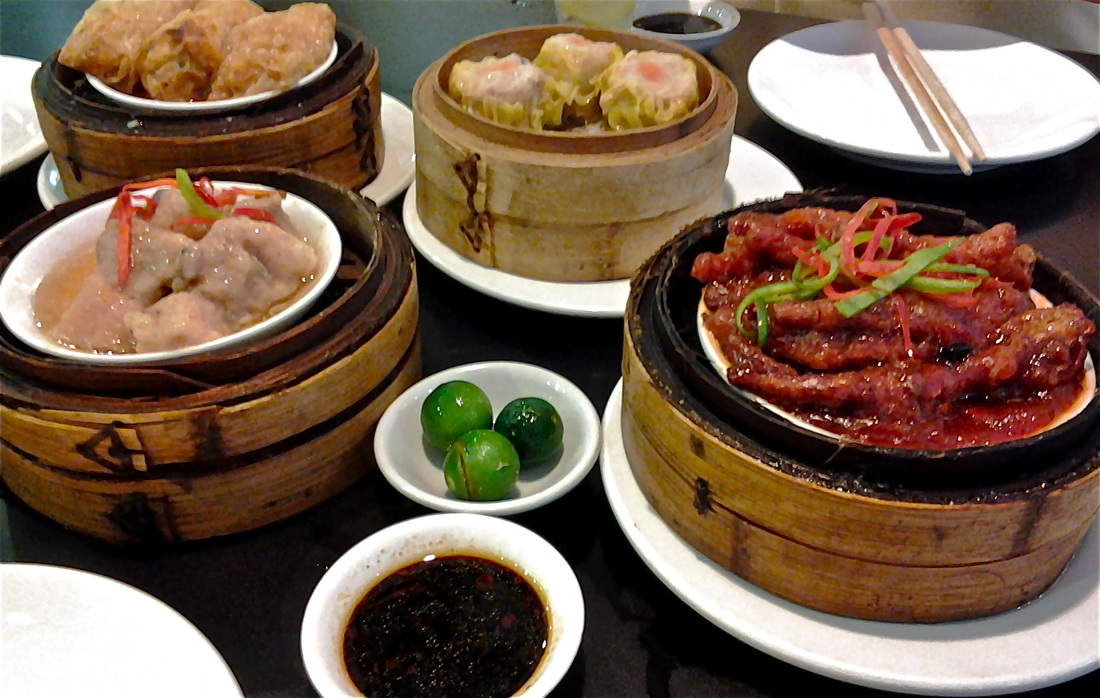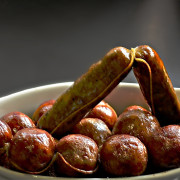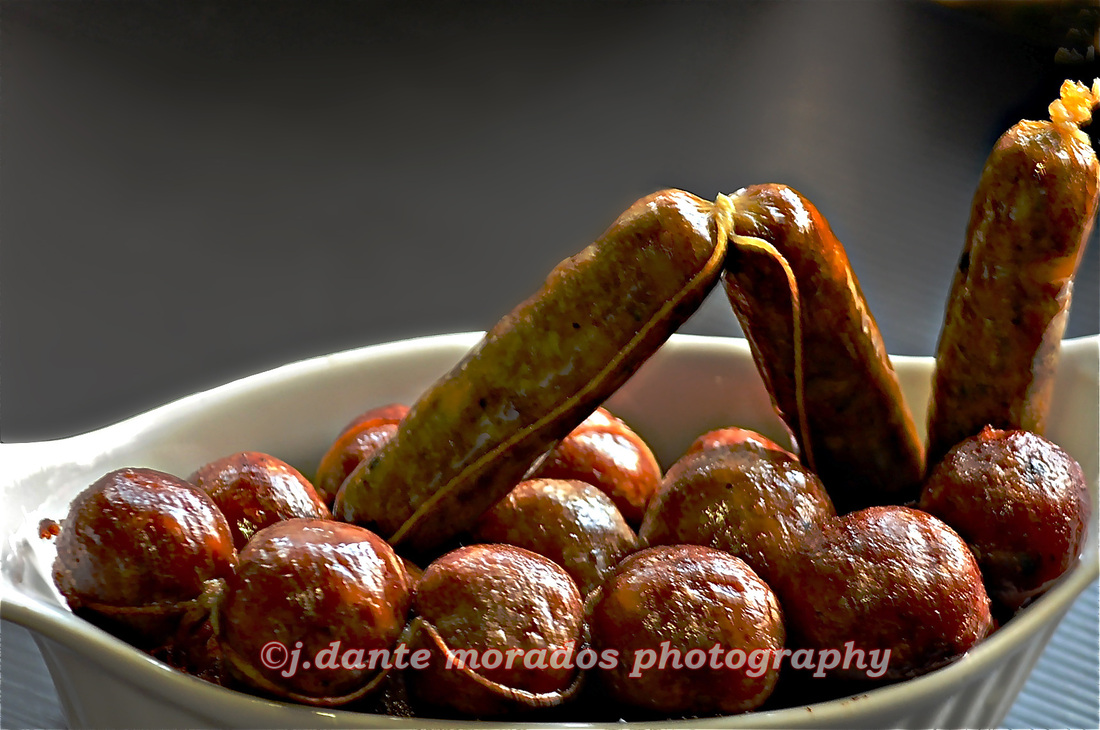PINAUPONG MANOK (Chicken Steamed “By” A Bed of Salt). No water…nothing…just salt.
PINAUPONG MANOK
( Chicken Steamed “By” a Bed of Salt)
Fad of the year is geared unto “Hainanese Type” chicken dish.
For such, I particularly love the offering of
Wee Nam Kee-Raffles Ave., Singapore ONLY
(click for resto’s details)
No “hocus pocus”, plainly served-just
concoct your own dip with or without their “oiled ginger”.
With such as my inspiration…this dish is hereby re-activated.
I always take into consideration hectic sked of the workforce.
Learned from my parents, innovated fully to suit
today’s busy bodies, here’s another chicken recipe (Filipino that is)
that anybody can prepare.
Tastier than Hainanese-type, quicker to prepare
and the simplest ingredients ever.
( Chicken Steamed “By” a Bed of Salt)
Fad of the year is geared unto “Hainanese Type” chicken dish.
For such, I particularly love the offering of
Wee Nam Kee-Raffles Ave., Singapore ONLY
(click for resto’s details)
No “hocus pocus”, plainly served-just
concoct your own dip with or without their “oiled ginger”.
With such as my inspiration…this dish is hereby re-activated.
I always take into consideration hectic sked of the workforce.
Learned from my parents, innovated fully to suit
today’s busy bodies, here’s another chicken recipe (Filipino that is)
that anybody can prepare.
Tastier than Hainanese-type, quicker to prepare
and the simplest ingredients ever.
INGREDIENTS:
MAIN:
1 kilo fully cleaned chicken, neck, feet & innards removed
and, if possible, skin still intact
2-3 kilos rough sea salt (steaming pan dependent)
2 packets of Knorr or Maggi “Sinigang Mix” (tamarind soup base)
GARNISH:
1 small sliced carrot
1 small sliced cucumber
1 small bunch onion leaves or celery stalks (optional)
DIPPING SAUCE:
1 small cut of ginger, de-skinned, grated
20 ml. EVOO (Extra Virgin Olive Oil)
40 ml. soy sauce
10 ml. calamansi juice
10 grams “chili-garlic sauce” (optional)
(for chili-garlic recipe click here)
PROCEDURES:
1. Covering all parts inside and outside,
rub chicken with “Sinigang Mix”. Set aside.
2. In suitable pan, pour in salt
and make at least 2 inches thick layer at the bottom.
MAIN:
1 kilo fully cleaned chicken, neck, feet & innards removed
and, if possible, skin still intact
2-3 kilos rough sea salt (steaming pan dependent)
2 packets of Knorr or Maggi “Sinigang Mix” (tamarind soup base)
GARNISH:
1 small sliced carrot
1 small sliced cucumber
1 small bunch onion leaves or celery stalks (optional)
DIPPING SAUCE:
1 small cut of ginger, de-skinned, grated
20 ml. EVOO (Extra Virgin Olive Oil)
40 ml. soy sauce
10 ml. calamansi juice
10 grams “chili-garlic sauce” (optional)
(for chili-garlic recipe click here)
PROCEDURES:
1. Covering all parts inside and outside,
rub chicken with “Sinigang Mix”. Set aside.
2. In suitable pan, pour in salt
and make at least 2 inches thick layer at the bottom.
3.Sit in chicken making sure not a part of it touches
the sides of pan. (failing which, burning occurs)
Use its neck or feet as “kalso” (wedge thing)
under it to ensure chicken sits upwards.
SEE FIRST PIC ABOVE.
4. Heat pan at medium temp and “steam” chicken
for no more than 20 minutes (for very juicy inside) or
up to 25 minutes (for just right medium well state).
Steaming longer will render dryness to poultry.
the sides of pan. (failing which, burning occurs)
Use its neck or feet as “kalso” (wedge thing)
under it to ensure chicken sits upwards.
SEE FIRST PIC ABOVE.
4. Heat pan at medium temp and “steam” chicken
for no more than 20 minutes (for very juicy inside) or
up to 25 minutes (for just right medium well state).
Steaming longer will render dryness to poultry.
5. While waiting heat EVOO, pour in grated ginger and heat for 1 minute. Set aside.
6. And now… oh WOW, your chicken “steamed via bed of salt” is done.
7. Mix in “calamansi juice”, soy sauce and “chili-garlic sauce” for dip
or grated ginger with soy sauce or whatever…
it’s your rule…your wild…
8. Slice, garnish and serve
your very own style of better than Hainanese poultry.
6. And now… oh WOW, your chicken “steamed via bed of salt” is done.
7. Mix in “calamansi juice”, soy sauce and “chili-garlic sauce” for dip
or grated ginger with soy sauce or whatever…
it’s your rule…your wild…
8. Slice, garnish and serve
your very own style of better than Hainanese poultry.
NOTE:
Don’t worry about your pan. Just pour in half pan tap water.
Let sit overnight. Post cleaning, it will again be
“spick and span”.
A lot of variations can be applied to this recipe.
You wanna know?
Ask me. Click here.
Don’t worry about your pan. Just pour in half pan tap water.
Let sit overnight. Post cleaning, it will again be
“spick and span”.
A lot of variations can be applied to this recipe.
You wanna know?
Ask me. Click here.


